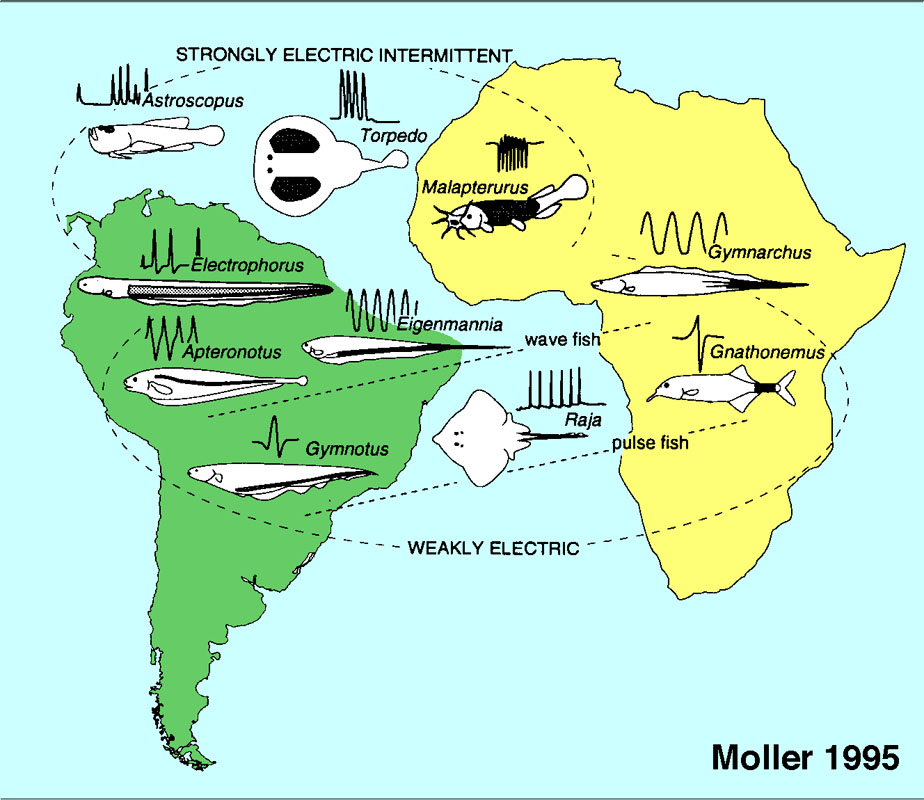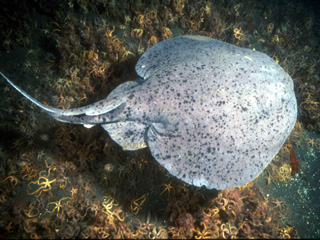Most Deadly Species
We know that fish is liked by many people around the world and they depend on fishes or fish products for their food and economic livelihood. There are more than 30,000 different species hound Earth’s oceans and bodies of fresh water. Among them, there are many beautiful species highlighted and kept in private or public aquariums, and fish stores. However, some species carry darker side and terrifying aspects. There are few selected species which may attack human beings, while others deliver a dose dangerous toxins when handled carelessly or not properly prepared and consumed.

What is an Electric Fish?
Fish species which produce electric fields are considered to be an electric fishes. These type of fishes are called electrogenic. These species also have the ability to detect electric fields and are said to be electroreceptive. You will find these fishes in oceans and some fishes also live in fresh water rivers of south America and Africa. Look at the below image which explains the geographical distribution of electric fishes, along with their locations and a sample of the waveforms of the electric organ discharge.

What's not an Electric Fish?
Fishes like skates, sharks, rays and catfish also detect electric fields, and are thus electroreceptive, but they do not produce an electric field.That is the reason they are not said to be electric fishes.
The Electric Organ Discharge (EOD)
The electric fishes which detect electric fields are produced by a specialized structure called electric organ. You can see this electric organ in every electric fish which will be a shaded black line shown in the above figure. This electric organ is made up of modified nerve cell or a muscle, which is specialized for producing electric fields. In most of the electric fishes, this electric organ will be located in the tail, and it is called as electric organ discharge and is abbreviated as EOD. The electric fishes stun their prey wit the help of their EOD.
Here is the list of the most Deadly Creatures of Ocean
Electric Eel
The electric eel is the most deadly creatures in the oceans. These deadly creatures are found in the Amazon river of South America. There are six feet and can produce more than 500 volts. This six-foot animal produces almost with no other animal can conjure a killing shark of electricity. This unique creature more closely related to a catfish than an eel. First, it produces small electric feels sensing the distortions in it to navigate it to find the other animals. The electric eel probes lightly hiring sparks. The Eel is not going to rest until it is eaten. The electric eel can easily fight with other deadly animals of the ocean like Sea Snakes, Sharks, Sea lions, etc.
Pacific Torpedo Ray

Pacific torpedo Ray also called an electric ray is seen off the western coast of North America. The Pacific Torpedo ray has large flattened rays which often lie partly hidden on sandy seafloors. These species use a specific sensory system to detect the electrical stimuli to attack their victims by a witty trap. The killer wraps its body around a halibut and uses special kidney-shaped organs to produce an electric charge of up to 50 volts.
Stellate Sturgeon

Starry or Stellate Sturgeons are found in salt water, but they come back to freshwater rivers to breed. These are ancient species are now extinct in the Aegean Sea because of illegal fishing. Sturgeons, like their relatives, are among the relatively few fish species to pay electroreceptive abilities.
Pacific Lamprey

The primitive or Pacific lamprey is like an Eel with a sucker mouth with which it affixes larger fish as a parasite. Adult Pacific lampreys live in salt waters then migrate upriver to breed. The presence of an electroreceptive system in these most ancient living vertebrates has remained largely unmoved for about 360 million years now.
Sandbar Shark

Like other sharks, the Sandbar shark has electroreceptors, hundreds of specialized pores located on and around its head. These species have a sensory system to detect the electric fields. However all the animals give off with every heartbeat or movement of a muscle, but these sharks use an incredible ability to locate even buried prey, like stingrays on the seafloor. Larger sharks can detect an electric field for about one meter (three feet).






